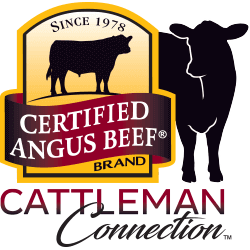Farm Purchase Helps Certified Angus Beef Tell a Better Story
Date: Mar 22 2022
| About the brand & News Release
Date: Mar 22 2022
| About the brand & News ReleaseDate: Jan 05 2022
| Big Thinkers & Forage Management & SustainabilityRotationally grazing cattle is one of the best ways to manage the Prairie Pothole Region for waterfowl, for other ground nesting birds, for the general public, and for ranchers themselves, says Tanner Gue, a Ducks Unlimited biologist.
Date: Oct 05 2021
| Big Thinkers & Forage Management & Nutrition & SustainabilitySustainability is a hot topic of conversation, but the folks at Bradley 3 Ranch make it tangible with 60+ years of continual progress. Their work in developing the land, cattle and water have turned what was once called a ‘wasteland’ into a ranching outfit worthy of recognition. B3R is our 2021 Sustainability Award winner.
Date: Sep 22 2021
| Forage Management & Heifer Development & News Release & Nutrition & SustainabilityBefore there were fences and farms in the Panhandle, stirrup high grasses owned the land. With time, they have dwindled to near extinction. And with time again, they’re resurrecting. Nothing is a one-year thought process. Just like building a fence, they determine whether their decisions will last the next 50 years.
Date: Aug 27 2021
| Feeding Quality Forum & Health & News Release & StockmanshipThe hands of a veterinarian hold the life cycle of an animal in their care. The mind, however, directs the hands. Anyone who’s met Dr. Bob Smith knows the way he thinks is something else. It’s come from more than 30 years in the industry caring for its people and cattle. It’s why he earned the 2021 Industry Achievement Award.
Date: Aug 24 2021
| Big Thinkers & Feeding Quality Forum & Health & StockmanshipDr. Bob Smith, or “Doc Bob,” is the kind of man that looks to others’ success before his own. One that endeavors to be a life-long learner and shares that knowledge with anyone it’ll help. He’s also our 2021 Industry Achievement Award recipient.
Date: Jul 13 2021
| Cattle Feeding & Feeder Calf Marketing & News Release & Post WeaningNot every ranch, pen or feedlot is alike or ideally suited to handle the same class of cattle. Here is a 12-point checklist of ways cattlemen can help themselves when selecting a feedyard.
Date: Jul 01 2021
| Big Thinkers & Cattle Feeding & Feeder Calf Marketing & Post Weaning & Premium PotentialChoosing a feedyard is a bit like selecting a life partner. Feedyards offer different marketing opportunities and strategies. A manager should be able to look at a customer’s pen and know, “I have a good market for those cattle. I can handle it.”
Date: Apr 01 2021
| Consumer Connection & News ReleaseRetail beef sales during the pandemic displaced much of the trade usually enjoyed by foodservice. Grocery stores and restaurants around the world had their business plans radically changed in just a few days, but the demand for beef remained.
Date: Apr 01 2021
| About the brand & Consumer Connection & Consumer FeatureSelling U.S. beef to buyers in other countries means carefully maintained contacts and planning to avoid sea squalls. Adding COVID to that scene creates a perfect storm that can wreck the best plans. For those skilled in navigating the waters, however, it’s just another day on the boat.